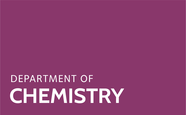The move to an integrated chemistry teaching laboratory and the purchase of a single crystal X-ray diffractometer to complement our existing powder X-ray diffraction equipment has enabled us not only to extend the scope of our X-ray practicals, but to incorporate the use of these techniques into the general practical course. Students are introduced to powder X-ray diffraction in the first year as a technique to identify crystalline solids. In the second year they collect and index powder patterns from unknowns, determine their cubic lattice parameters and Bravais lattice types, and use powder X-ray diffraction to follow the course of solid state reactions. As part of a study of structure property relationships for a series of mixed metal oxides students use a structural modelling program to calculate theoretical powder X-ray diffraction patterns and compare these with their experimental data. X-ray diffraction is combined with a solution calorimetry experiment to explore the structure and thermodynamics of solid solutions. Acquiring a single crystal X-ray diffractometer to add to our powder X-ray diffraction equipment means that students in the third year can, in addition to learning how to use single crystal x-ray diffraction, determine the structures of compounds prepared and studied elsewhere in the practical course, for example ferrocene derivatives and copper(II) acetate. With both powder and single crystal X-ray diffraction available students now carry out structure refinement using both powder and single crystal diffraction data.




